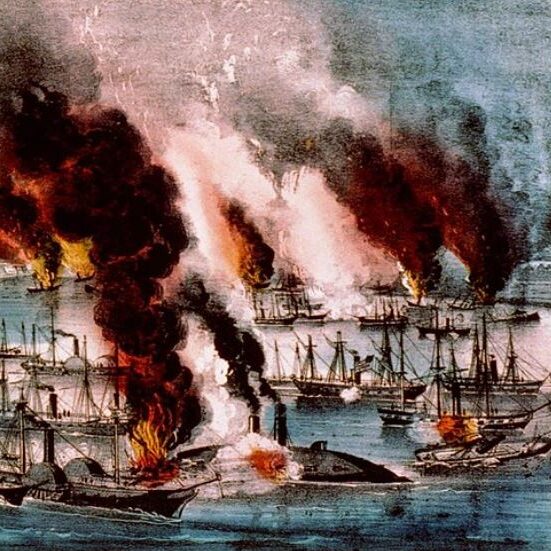Why was the Battle of Forts Jackson and St Philip fought? The Battle of Forts Jackson and St. Philip was fought during the American Civil War in April 1862. It was part of Union General David Farragut’s campaign to capture the city of New Orleans, a key Confederate stronghold on the Mississippi River.
Join me in this article as we recount the triumphs and challenges that shaped the Union victory, shedding light on the significance of Forts Jackson and St. Philip in the broader context of the Civil War.
- 1. The Key Figures at Forts Jackson and St. Philip
- 2. The Strategic Importance of Forts Jackson and St. Philip
- 3. Preparations and Leadership
- 4. Union Strategy at Forts Jackson and St. Philip
- 5. Confederate Defenses at Forts Jackson and St. Philip
- 6. The Union Advance
- 7. Surrender and Aftermath
- 8. Casualties at Forts Jackson and St. Philip
- 9. Impact on the Civil War
- Further Reading
1. The Key Figures at Forts Jackson and St. Philip
The Battle of Forts Jackson and St. Philip, a strategic clash during the Civil War, witnessed the emergence of two central figures whose roles would shape the narrative of this confrontation.
Confederate Brigadier General Johnson Kelly Duncan
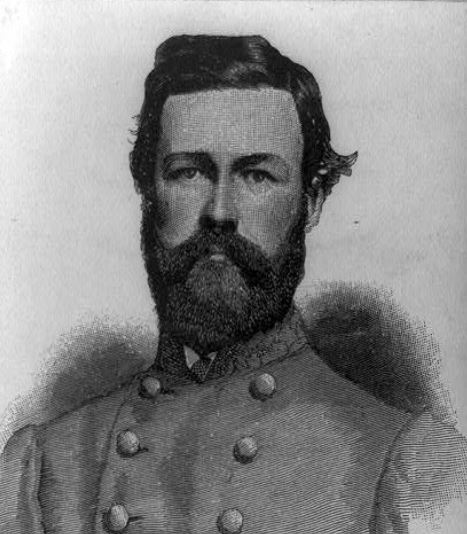
Brigadier General Duncan, a prominent Confederate military leader, took on the critical responsibility of defending the Mississippi River.
Born in 1827 in York, Pennsylvania, Duncan’s journey led him from West Point graduation in 1849 to service on the frontier and in Florida.
His dedication to the cause saw him retire from the Army in 1855, taking up a civil engineering role in New Orleans. When the Civil War erupted, Duncan offered his services to the Confederacy.
As the Confederate Brigadier General, Duncan’s leadership extended beyond mere military strategy. His decisions impacted the morale of the troops, the efficacy of the forts’ defenses, and the overall resilience of the Confederate forces.
Union Navy Flag Officer David Glasgow Farragut
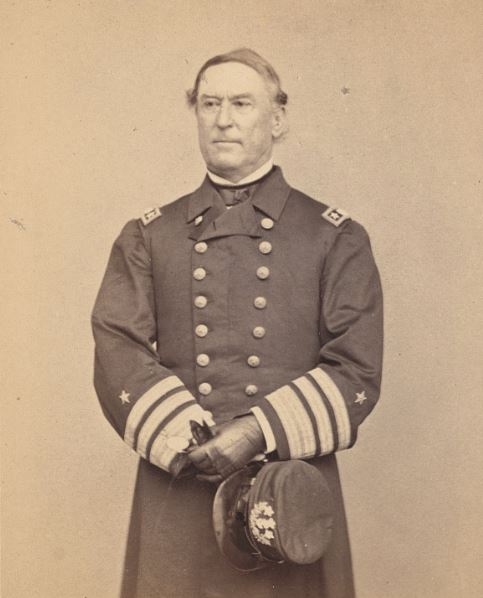
On the opposing front stood Union Navy Flag Officer David Glasgow Farragut, a seasoned and strategic leader in charge of the Union blockade.
Farragut’s naval career was marked by distinction. His leadership and tactical acumen played a crucial role in shaping the Union’s approach to the conflict.
2. The Strategic Importance of Forts Jackson and St. Philip
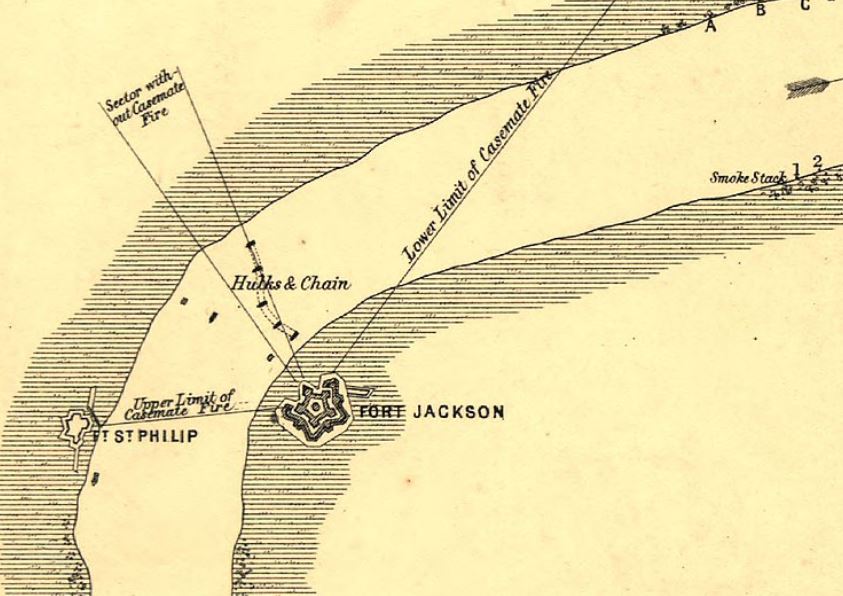
The Battle of Forts Jackson and St. Philip unfolded against a backdrop of strategic significance for the Civil War.
It formed a key part of the “Anaconda Plan“, the Union’s military plan to slowly tighten its grip on the South. The plan had three main components:
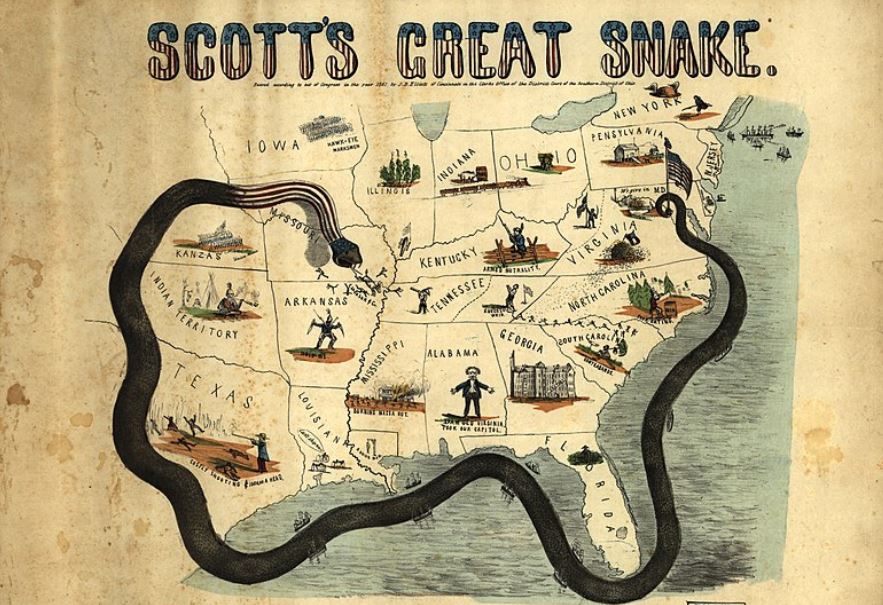
- Blockade of Southern Ports: The Union Navy would block Southern ports to prevent the Confederacy from exporting its cotton and importing necessary supplies. This blockade was intended to cut off the Confederacy from international trade and weaken its economy.
- Control of the Mississippi River: The Union sought to gain control of the Mississippi River, which was a vital waterway for transporting goods and troops. By controlling the river, the Union would split the Confederacy in half and disrupt its internal transportation.
- Capture of Richmond, Virginia: The Confederate capital, Richmond, was a key political and military center. The Union aimed to capture Richmond to weaken the Confederate government and potentially bring about the end of the war.
The Battle of Forts Jackson and St. Philip formed a key part of first and second components of this plan.
Forts Jackson and St. Philip: Defence Against Invasion
Situated as guardians on the Mississippi, Forts Jackson and St. Philip assumed a critical role as the last line of defense against a potential Union invasion of New Orleans.
These forts, approximately 75 miles below New Orleans, marked a geographical defense against any approach from the south. Positioned on opposite banks of the Mississippi, they stood as formidable barriers.
Their significance extended beyond military defense; they represented a symbolic shield protecting the gateway to the South.
New Orleans – A City at Stake
New Orleans, the crown jewel at the center of this conflict, held unparalleled economic importance for the Southern states. As the largest city and busiest port, it served as the nexus of the cotton trade, a commodity that fueled the economic engine of the South.
The State of Louisiana, anticipating a Union invasion, had initiated preparations soon after South Carolina’s secession in December 1860. Governor Thomas Overton Moore, recognizing the economic vulnerability of the South, undertook the seizure of federal property, including the river forts.
International Cotton Trade
The South provided three-quarters of the world’s cotton. And approximately 20 percent of Great Britain’s population depended on the Southern textile industry for its livelihood.
Confederate President Jefferson Davis understood the economic importance of defending New Orleans. It was a strategic necessity to secure the economic lifeline of the South. The forts, therefore, stood as guardians of this vital connection to the world.
Whereas, the Union say it as a contest for control over the economic arteries that fueled the Southern states.
3. Preparations and Leadership
Seizing Federal Property: Prelude to Conflict
The stage was set in 1860 when the State of Louisiana, led by Governor Thomas Overton Moore, embarked on a bold initiative – the seizure of federal property.
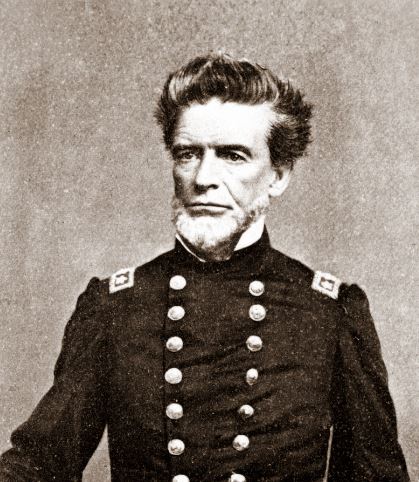
The decision to seize federal property, including Forts Jackson and St. Philip, reflected a foresight into the potential battlegrounds of the impending conflict.
The act of taking control of the forts was not merely a military maneuver; it was a symbolic statement of defiance. It sent a clear message that the South was prepared to defend its interests against any encroachment.
Leadership Transitions: Twiggs to Lovell to Duncan
As the clouds of war gathered, leadership transitions became a defining feature of the Confederate strategy.
Major General David Twiggs, initially tasked with defending New Orleans, was soon replaced by Major General Mansfield Lovell due to age and health concerns.
Described as “a brilliant, energetic, and accomplished officer,” Lovell brought a wealth of military experience to the table. His proactive requisition of heavy guns showcased a commitment to fortifying the river defenses, a crucial element in the upcoming conflict.
Lovell, in turn, laid the groundwork for the defense, but his retirement led to a pivotal recommendation – the appointment of Johnson Kelly Duncan.
Duncan’s leadership emerged as a crucial element in the Battle of Forts Jackson and St. Philip. His role in overseeing the placement of heavy guns, division of forces, and knowledge of naval forces on the river became instrumental in the Confederacy’s defense.
4. Union Strategy at Forts Jackson and St. Philip
The Union’s strategy had pinpointed New Orleans as the primary target.
This decision to target New Orleans was not arbitrary; it was grounded in a keen understanding of the city’s strategic and economic significance. Controlling the city meant exerting influence over this economic powerhouse, dealing a severe blow to the Confederacy.
The Mississippi River itself served as a crucial artery for transportation and communication. Capturing New Orleans would not only cut off a vital supply route for the Confederacy but also pave the way for Union forces to move deeper into Southern territory.
Farragut’s Appointment: A Tactical Masterstroke
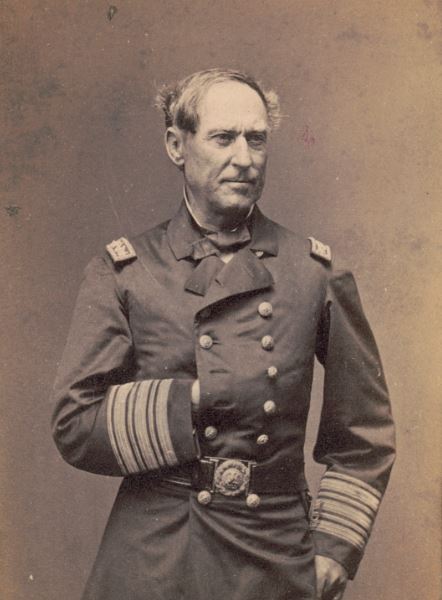
With New Orleans identified as the target, the Union needed a seasoned and strategic leader to spearhead the assault. The appointment of Flag Officer David Glasgow Farragut to lead the West Gulf Blockading Squadron was a stroke of tactical brilliance.
Born in Tennessee in 1801, Farragut had a distinguished naval career that spanned decades. His Southern roots didn’t deter him from remaining loyal to the Union, showcasing a commitment that would prove crucial in the coming battle.
Farragut was well aware of the challenges posed by the formidable defenses of Forts Jackson and St. Philip. The presence of these forts, armed with heavy guns and strategically positioned to control river access, presented a daunting obstacle.
Farragut’s leadership style was marked by adaptability and boldness. His decision to run his fleet past the forts at night, relying on the cover of darkness, showcased his ability to think outside the box and take calculated risks.
The Union’s Strategic Brilliance
The brilliance of the Union strategy lay in its holistic approach.
Naval Blockade: The Union Navy, under the command of Admiral David Farragut, sought to establish a naval blockade of Southern ports to prevent the Confederacy from importing and exporting goods. Controlling the mouth of the Mississippi River was essential for enforcing this blockade.
Daring Naval Assault: Farragut’s fleet consisted of a mix of wooden and ironclad warships. To overcome the strong defenses of the forts, he opted for a daring and unconventional strategy. Under the cover of darkness, the Union fleet ran past the forts while exchanging heavy fire with Confederate forces. This bold move allowed the Union Navy to reach a position above the forts, effectively cutting them off from reinforcement and resupply.
5. Confederate Defenses at Forts Jackson and St. Philip
These forts were heavily fortified and equipped with a variety of defenses to prevent Union forces from gaining control of the vital waterway.
Both forts were equipped with strong earthen fortifications, including earthworks, parapets, and bastions designed to withstand artillery fire.
The forts were armed with a significant number of artillery pieces, including both heavy guns and field artillery. Cannons were strategically positioned along the riverbanks to cover potential approaches by Union naval vessels.
Ironclad-Equipped Gunboats
In response to the Union’s superior naval power, the Confederacy deployed gunboats equipped with ironclads.
Ironclads represented a significant technological adaptation in naval warfare. Clad in iron plates, these gunboats could withstand enemy fire, providing a tactical advantage to the Confederate forces.
As the Confederate leadership assessed their defensive capabilities, the consideration of CSS Louisiana as a floating battery added another layer to their strategic thinking. The CSS Louisiana, a semi-submersible ironclad designed to function as a floating battery. Its innovative design aimed to provide mobile firepower, disrupting Union naval advances.
By deploying ironclad-equipped gunboats and CSS Louisiana, the Confederacy sought to counterbalance the naval dynamics, creating a more level playing field against the technologically superior Union fleet.
The Confederate defenses were not static fortifications but dynamic responses to the evolving challenges of the Civil War. The heavy guns, CSS Louisiana, and ironclad-equipped gunboats collectively portrayed a narrative of innovation and strategic acumen in the face of formidable odds.
6. The Union Advance
The Union Flotilla: An Orchestra of Destruction
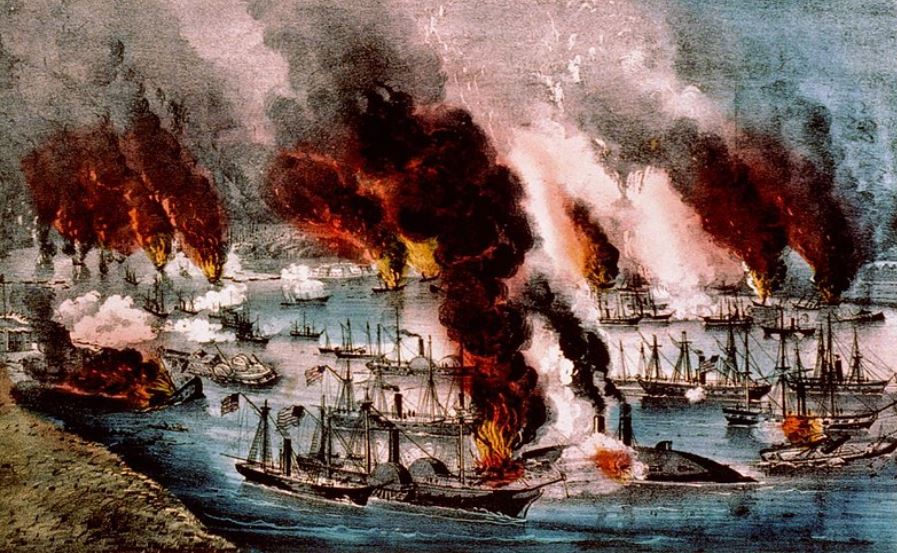
The Union’s approach was methodical and devastating, embodied by the deployment of a mortar flotilla.
This specialized fleet of vessels, armed with powerful mortars, unleashed a barrage of explosive shells onto the Confederate forts. The impact was profound, causing significant damage to the structures of Forts Jackson and St. Philip.
The thunderous explosions reverberated through the forts, testing the resilience and resolve of those who stood in defense.
The barrage was designed to weaken defenses as the man fleet passed the forts.
Confederate Fire Rafts: A Desperate Gambit
Faced with the overwhelming force of the Union flotilla, the Confederacy resorted to desperate measures. Fire rafts, laden with combustible materials, were deployed in a last-ditch effort to disrupt the Union advance past the forts. However, these fiery gambits proved futile.
Farragut’s Passage through the Forts

Amidst the chaos of exploding shells and flaming rafts, Flag Officer David Glasgow Farragut orchestrated a daring and successful passage through the forts on April 24th, 1862.
He chose to run his fleet past them under the cover of darkness, taking advantage of the element of surprise. His fleet navigated the treacherous waters, deftly avoiding the impediments laid by the Confederacy.
The darkness helped conceal the fleet from Confederate gunners, making it difficult for them to target the Union ships accurately.
The Union fleet faced a barrage of Confederate artillery and gunfire as it navigated through the narrow and heavily defended river passage. The ships had to contend with obstacles such as the chain stretched across the river, underwater mines, and the threat of artillery from both forts.
By running past the forts, Farragut effectively isolated the forts from reinforcement and resupply. This strategic move placed the Confederate garrisons in a vulnerable position, contributing to their eventual surrender.
The successful Union advance dealt a severe blow to Confederate morale. The once-impregnable forts, now weakened by bombardment, faced the imminent threat of capitulation.
With the forts effectively neutralized, Farragut’s fleet continued up the Mississippi River, ultimately capturing New Orleans on April 25, 1862.
The fall of the city was a significant blow to the Confederacy and a major success for the Union war effort.
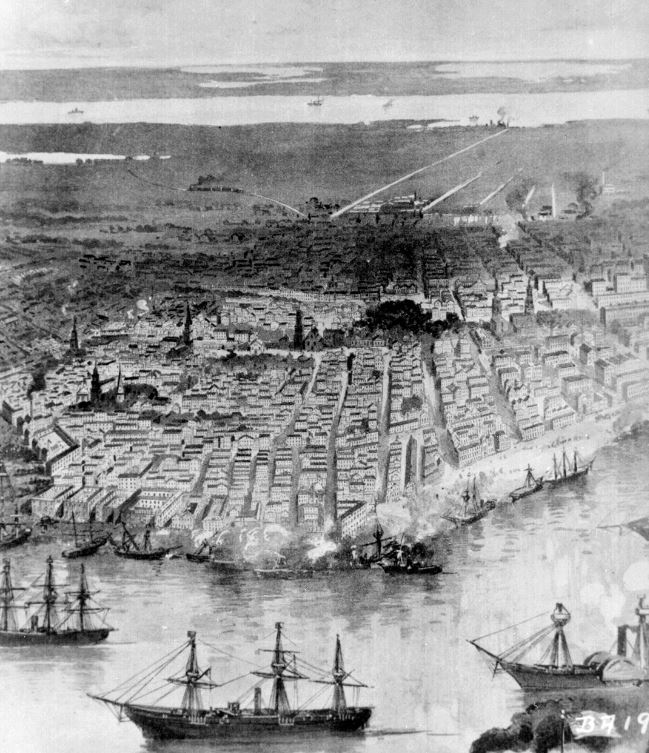
Farragut’s bold and decisive action secured a significant victory for the Union forces.
7. Surrender and Aftermath
The penultimate act in the Battle of Forts Jackson and St. Philip unfolded with the surrender of Fort Jackson on April 28th, 1862.
Confederate Garrisons Under Siege
The Confederate garrisons at Forts Jackson and St. Philip found themselves subjected to relentless bombardment. The once-mighty defenses, now battered and bruised, struggled to withstand the relentless onslaught orchestrated by the Union forces.
Within the Confederate ranks, the toll of the battle manifested in mutinous sentiments and a general decline in morale.
The prolonged bombardment and the successful Union advance had sowed the seeds of internal discord, further weakening the resolve of the defenders.
The Surrender of Fort Jackson
Fort Jackson finally capitulated on April 28th, 1862, three days after of you fall of New Orleans.
The tattered Confederate flag lowered, symbolizing the end of a valiant but ultimately futile stand. The surrender marked a significant milestone in the Battle of Forts Jackson and St. Philip and set the stage for Federal occupation.
The surrender was not merely a military formality; it was a somber acknowledgment of the changed dynamics during the Civil War.
With the surrender of Fort Jackson, the path was cleared for Federal occupation. The Union forces, led by General Benjamin Butler, prepared to assert their authority over the city of New Orleans.
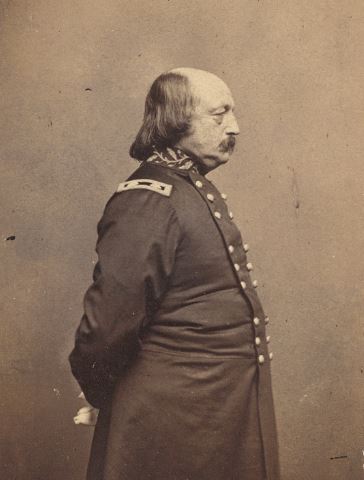
General Benjamin Butler’s Strict Measures
The Federal occupation under General Benjamin Butler was marked by a stringent and uncompromising approach. Butler, known for his no-nonsense tactics, implemented measures aimed at maintaining order and quelling any potential resistance from the local population.
Butler’s occupation protocols were characterized by strict curfews, censorship of local media, and a firm hand in dealing with dissent. His objective was clear: to establish and maintain Union control over the recently captured city.
While effective in maintaining order, Butler’s measures were not without controversy. His decision to treat the local populace as potential enemies of the state, combined with his authoritarian style, garnered criticism and fueled tensions.
8. Casualties at Forts Jackson and St. Philip
The toll of the conflict was not only on structures but lives.
The Confederates had over 780 casualties at the Battle of Forts Jackson and St. Philip.
The Union suffered 230 casualties.
The capture of New Orleans resulted in an estimated 1,011 casualties, marking the human cost of this historical turning point.
9. Impact on the Civil War
The impact of the Battle of Forts Jackson and St. Philip reached far beyond the banks of the Mississippi River, resonating as a resounding turning point in the trajectory of the Civil War.
The capture of New Orleans, a city of immense strategic and economic importance, wielded profound implications.
Strategically positioned at the mouth of the Mississippi River, New Orleans held immense economic significance for the Confederacy. Its loss marked not only a blow to Confederate military capabilities but also a severe disruption to the Southern economy, particularly in the vital cotton trade.
The Union blockade tightened its grip, choking off crucial supply lines and hindering the Confederacy’s ability to sustain its war effort.
The Union now controlled a key entry point to the Mississippi River, severely limiting Confederate mobility and complicating their ability to transport goods and troops.
The capture of New Orleans wasn’t merely a singular event but a domino that set off a chain reaction of subsequent developments.
The Union now had a tangible presence deep within Confederate territory.
Further Reading
If you enjoyed this article, you may be interested to read more about Louisiana in the Civil War or other American Civil War events, such as battles in Maryland, North Carolina or more general American history.

